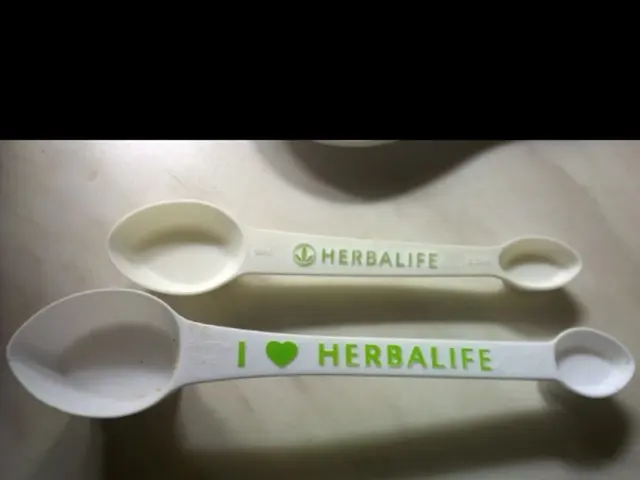Streamlining Your Feline's Nutrition: A Vet's 5 Essential Tips for Optimal Feeding
Tackling Your Kitty's Nutrition:
Maintaining a healthy and happy feline companion requires both a balanced diet and a little finesse when it comes to feeding them. Here are some practical tips from Dr. Rebecca MacMillian, a vet with 16 years of experience, to help you navigate your cat's dietary needs.
1. Age-specific dieting
Just like humans, cats have unique nutritional requirements based on their life stage. These stages include kittens (0-12 months), adults (1-7 years), seniors (7-11 years), and geriatric (11+ years). Maintaining an appropriate diet for your cat's age group can optimize nutrition, leading to better overall health.
Feeding an adult cat kitten food might not be dangerous, but it can increase the risk of obesity due to the excess calories present in kitten food. Similarly, a cat's nutritional needs can change as they approach their senior and geriatric years, so a transition to one of the best senior or geriatric cat foods becomes crucial.
2. Maintaining a clean feeding station
The cleanliness of your cat's feeding area plays a significant role in their appetite. Plastic bowls, over time, develop grooves and scratches that retain food particles and bacteria. These bowls can be challenging to clean, which can lead to a buildup of odors that may discourage your cat from eating. Opt for ceramic, glass, or stainless steel bowls to ensure a hygienic feeding experience. Moreover, avoid topping off your cat's water or putting new food on top of old food—doing so would be unpleasant, even for us humans!
3. Moderate treats
Treats can be great rewards for your feline friend, but it's essential to practice moderation. The high caloric content of treats can, over time, lead to an unbalanced diet if they become too frequent, potentially resulting in weight gain. Save treats for special occasions or positive reinforcement, such as after nail trims or other less enjoyable experiences.
4. Gradual food transitions
Changing your cat's food—perhaps due to a new life stage or health condition—should be a gradual process. A gradual diet change can help prevent digestive issues, like diarrhea, by allowing your cat's gut to adjust to the new food more easily. Over the course of a week, mix the old and new food until the cat is fully transitioned to the new diet.
5. Avoid human foods that might harm your cat
While it's tempting to share treats from your table, many human foods are dangerous for cats. Some of these include caffeine drinks, chocolate, onions, garlic, grapes, and milk. Being mindful of these potential hazards and sticking to kitty-specific foods ensures your cat's safety and well-being.
Remember, every cat has unique nutritional needs and personalities. While it's difficult to recommend a one-size-fits-all dietary approach, following these tips will help you craft a balanced, healthy, and fulfilling diet for your furry companion.
Looking for more cat nutrition information? Check out our articles on "Is dry cat food best?", "Is wet food bad for cats?", or learn about "obesity in cats."
Dr. Rebecca MacMillian is a veterinary surgeon who graduated from the Royal Veterinary College in London in 2009. With a decade of experience, she enjoys medicine, particularly in first-opinion small animal practice. She writes on various topics, including behavior, nutrition, and health. When not working or writing, she enjoys spending time with her young family and baking!
[References]1. Lulich, J. P., HDirectory:Ref¶Cummings, J. F., & Kirk, R. W. (2010). Joint Nutrition Committee of the American Association of Feline Practitioners and the International Association for Cat Care. Nutritional management of the obese cat. Journal of Feline Medicine and Surgery, 12(5), 373–381.2. Kirk, R. W., Karstedt, P. L., Delaney, S. J., & Lulich, J. P. (Eds.). (2015). Owner's Guide to Kitten and Cat Nutrition. Elsevier Health Sciences.3. Gilbert, R. J., Scicluna, A., Chandler, M., & Kass, P. H. (2015). The feline obesity epidemic: moving beyond caloric balance to breed predispositions, welfare, and the science of obesity. Journal of the American Animal Hospital Association, 51(6), 442–454.4. Coles, M. (2018). Environmental enrichment for senior cats. Veterinary Practice, 40(10), 360–364.5. Drobatz, K. J., England, P. C., Delaney, S. J., & Lulich, J. P. (2014). Evaluation of the effect of feeding schedules on body weight in cats receiving dry or moist diets. Journal of Veterinary Internal Medicine, 28(4), 878–885.
- Different life stages of cats require unique nutritional needs, such as feeding kittens the appropriate food to avoid obesity and transitioning seniors and geriatric cats to the best senior or geriatric cat foods.
- Maintaining a clean feeding station is crucial for a cat's appetite, with hygienic options like ceramic, glass, or stainless steel bowls being recommended over plastic ones.
- While treats can be used for rewards, moderation is key to prevent an unbalanced diet and potential weight gain.
- Gradual food transitions over a week's time can help prevent digestive issues when changing your cat's food for various reasons.
- Avoid feeding your cat human foods that may harm them, such as caffeine drinks, chocolate, onions, garlic, grapes, and milk.
- Tailoring your cat's diet to their specific nutritional needs and individual personality is essential for maintaining their health and wellness.
- If you're interested in learning more about cat nutrition, consider reading our articles on topics like the best type of cat food, the impact of obesity, and the risks of feeding your cat human foods.
- Dr. Rebecca MacMillian, a veterinary surgeon with 16 years of experience, writes on various topics, including behavior, nutrition, and health.
- Embracing healthy practices like providing proper food, exercise, and mental stimulation contributes to overall health-and-wellness, fitness-and-exercise, and lifestyle for both cats and their pet parents, as well as ensuring a harmonious home-and-garden environment for everyone involved.






